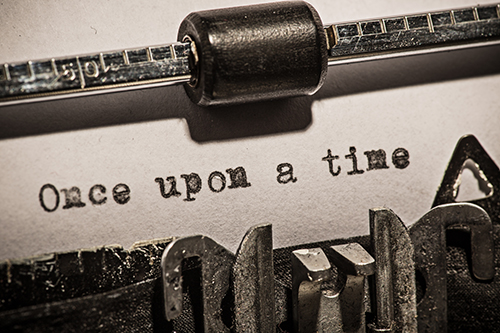Table of Contents
IDEAS AND STORY STARTERS
| Enchanted Learning’s Writing Activities has printable writing prompt worksheets, draw-and-write pages, brainstorming worksheets, make-your-own writing prompt pages, thought bubble and speech balloon pages, and a long list of essay projects for elementary-level students. Only site members can actually print the pages. (A single-family membership costs $20/year.) | |
| At Scholastic’s StoryStarters, visitors choose a genre (Adventure, Fantasy, Sci-fi, Scrambler), a grade level (K-1, 2, 3, 4-6), a format (notebook, letter, newspaper, postcard), generate a story scenario, and then create an online story (with an option for illustrations). Examples: “Write about a thrilling experience for a graceful reindeer who accidentally sets the science fair on fire.” “Describe a celebration for a tricky pirate who rides a wild boar.” | |
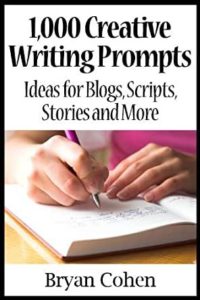
|
Bryan Cohen’s 1000 Creative Writing Prompts (CreateSpace, 2011) is a 132-page collection of story starters, grouped under such categories as “Holidays,” “Seasons,” “For the Kids,” “Art,” “Sports, “The Outdoors,” and “The Weird.” Adaptable for all ages. Also see Cohen’s 1000 Character Writing Prompts (CreateSpace, 2012), jumpstarts for inventing a wide range of characters, from superheroes and sidekicks to zombies, monsters, wicked stepmothers, and lawyers. |
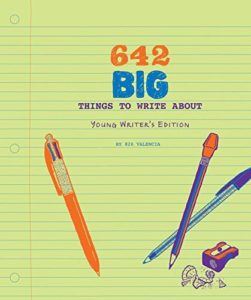
|
By A.S. Newman and P.C. Trauth, 365 Things to Write About! (TNA Publishing, 2011) consists of 365 lined pages with a short writing prompt printed at the top of each. Examples include an airplane, Alaska, aliens, the color red, a galaxy, a potion, quicksand, the Taj Mahal, a trap door. Adaptable for all ages.
Want more? Check out 642 Things to Write About (Chronicle Books, 2012). |
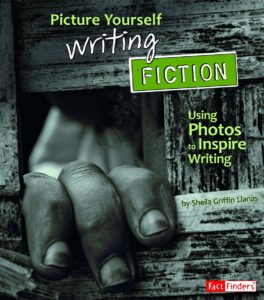
|
From Capstone Press, the Fact Finders series is a collection of 32-page books “Using Photos to Inspire Writing.” Titles are Picture Yourself Writing Fiction (Sheila Griffin Llanas, 2011), Picture Yourself Writing Nonfiction (Jennifer Fandel, 2011), Picture Yourself Writing Poetry (Laura Purdie Salas, 2011), and Picture Yourself Writing Drama (Barbara A. Tyler, 2011). Each has helpful instructions for writers, a reading list, and a collection of terrific color photographs to serve as inspirational story starters. For ages 8-12. |
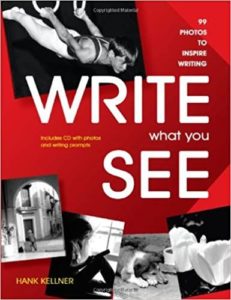
|
Hank Kellner’s Write What You See (Prufrock Press, 2009) contains 99 great black-and-white photographs to be used as writing prompts, each with a quotation, a short list of questions to consider, and suggestions for approaches or possible opening lines. For ages 12 and up. |
| At Creative Writing Prompts, point your cursor at a number (1-346) for a writing exercise or story prompt. Examples: “Why would a speaker be afraid of cats?” “Use all these words in a poem: crash, crumpled paper, straw, gravel, ochre.” “Write a story about greed with a CEO as the main character and a chess board as a key object.” For ages 12 and up. | |
| From The Teacher’s Corner, Daily Writing Prompts has a writing suggestion for every day of the year, based on holidays, anniversaries, historical events, and the birthdays of famous people. Adaptable for a range of ages. | |
| The Daily Writing Prompt is a terrific source of prompts and story starters, variously categorized by genre or topic, or based on the calendar. Included are pages of writing prompts based on picture books, writing prompts paired with video clips, journaling suggestions, and student portfolio samples. There’s also an option to publish your work online. | |
| Story Writing Game for Kids is a Mad-Libs-style writing exercise is which kids choose words to generate a ghost, romance, or spy story. | |
| Language Is a Virus has a long list of creative writing games and aids, among them a Character Name Generator and a Writing Prompts feature. | |
| The New York Times Learning Network is a great source of innovative lesson plans, categorized by academic discipline. | |
 |
Also from the New York Times, see 650 Prompts for Narrative and Personal Writing. |
